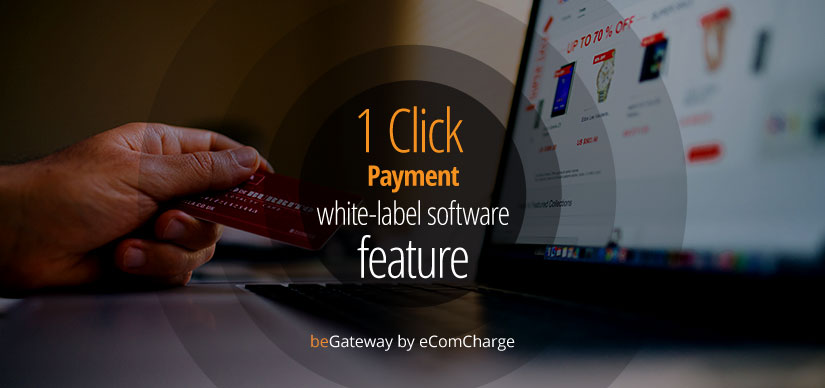What annoys buyers most of all while shopping online? It is having to get up from the sofa to get the wallet, take out the credit card and get back to the sofa to complete the purchase. And then to get up again to put the card back because we seem to use credit cards offline more often than on the Internet.

Of course, one could go looking for the wallet with the tablet. Or bring the wallet to the sofa before going shopping online. But one must admit it is not very convenient, especially in case of an impulse buy.
It annoys buyers to go through all these actions, if they often purchase goods from a certain site and consider themselves regular customers. We are sure such sort of discomfort is not unknown to any experienced online buyer.
How was this discomfort eliminated in the sphere of receiving online payments?
Developers of platforms for receiving and processing Internet payments are humans. And they did not fail to come up with something to free loyal online customers from the need to reach for their credit cards whenever they want to pay for an order.
This something ultimately resulted in a technology with a self-explanatory name: One Click Payment. And now every decent processing platform (and beGateway, the white-label software platform for payment service providers is undoubtedly a decent one) must support this technology.
At eComCharge, we have added the One Click Payment technology to beGateway platform since one of the earliest versions. Let me explain how it works.
How does One Click Payment work?
The operating principle of One Click Payment technology consists in storing the buyer’s card data (the buyer enters it on the payment page of the online store when paying for the first time) for further automatic use for future purchases.
Easy, isn’t it?
Your merchants simply collect and store their buyers’ credit card numbers, link each card to its owner’s account, and when a regular buyer places another order, all they have to do is ask politely whether Sir or Madame wants the shop to debit their account (such-and-such card number) with the cost of the purchase.
The buyer just clicks the button “I accept” or “Pay” and the shop itself will send the previously saved card number and all the necessary information to the payment service provider to complete the transaction.
But there is one catch.
Card data is sensitive and valuable information, which is constantly hunted for by all sorts of cybercriminals. The card payment industry has a strict PCI DSS standard designed to prevent this information from getting into the wrong hands.
Any member of the e-commerce market, dealing with card data, must undergo certification for compliance with this standard.
For most online stores it is usually too expensive and difficult to go through. And, therefore, they have no right to collect and store their customers’ card data. The good news is they don’t really need this right, because the One Click Payment technology uses the so-called “tokens”.
What is a token and how safe is it to store one for an Internet merchant?
A token seems to be a meaningless set of letters and numbers, which, however, is unique and linked to a specific card stored in a safe place on a secure server of the payment service provider in compliance with the requirements of the PCI DSS.
Each time the buyer pays for the goods by card online, the payment service provider (i.e., you) processes the payment and returns the transaction result together with the relevant card token to the merchant. At least, so do payment services that are based on the white-label processing platform beGateway.
Thus, the seller knows nothing about the buyer’s credit card, but has a token to store.
Card data cannot be restored through a token. Besides, it can only be used by the store for which it was issued. Therefore, a payment card token is of no interest for hackers. It is pointless to steal it.
But the merchant uses it as an index for the card data to inform the payment service provider, which card should be debited with the corresponding amount.
What does the payment process by a card token look like?
- When an online store wants to obtain a payment from a buyer (whose token or tokens the store already has), the merchant does not transfer the buyer to the payment page to enter payment information. Instead, the merchant makes a request to the payment service provider, using the available tokens.
- The payment service provider responds with the “abridged” numbers of payment cards linked to these tokens in the processing system of the payment service.
- The store shows these numbers to the customer.
- The buyer selects the card to pay by and agrees to pay by a single click on the appropriate button.
After that, the merchant knows which token to send to their payment service requesting to debit the card with the payment amount.
It’s simple, fast, convenient and safe.